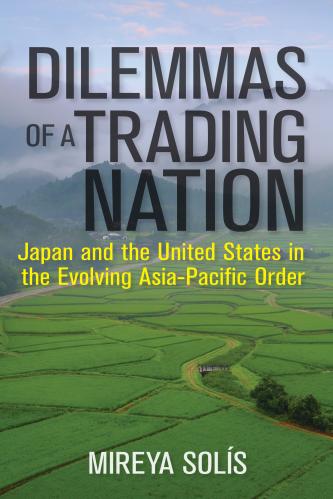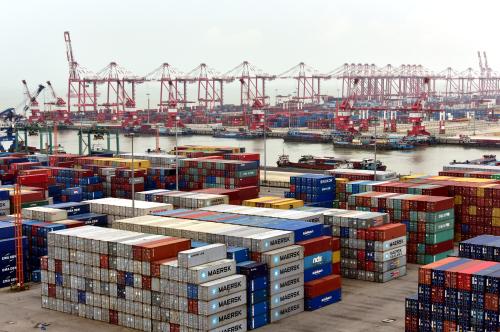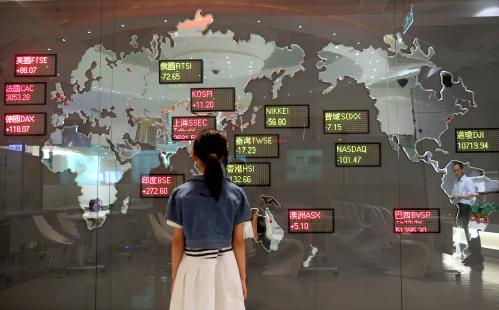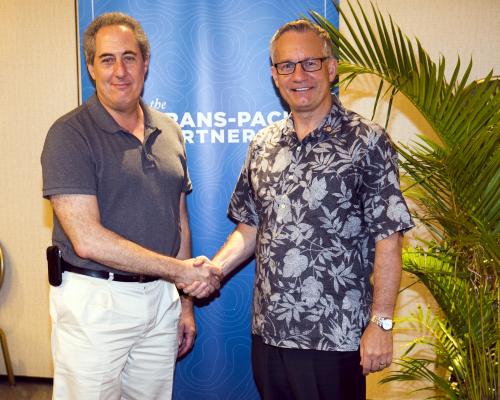The rescue operation to give the Trans-Pacific Partnership (TPP) a second lease on life—after the blow of the U.S. withdrawal in January—has gained momentum in the last few weeks. New Zealand has become the second country to ratify the trade deal, and the Japanese government has put its initial hesitation behind it and is now vocally championing a TPP 2.0—seeking the support of the other 10 members to enact the trade agreement. Hanoi—as the destination point for the Asia Pacific Economic Cooperation (APEC) Ministerial meeting in May and the APEC leaders’ summit in November—is well positioned to shape the future of the TPP.
Vietnam can use its role of APEC chair this year to facilitate the relaunch of the TPP by year’s end that proponents are aiming for. But its contribution to the TPP project runs much deeper.
Vietnam stands to enhance the value of the TPP in three ways. One is the demonstration effect that developing Asian countries can partake in a rules-heavy trade agreement such as the TPP. Although many had hailed the agreement as essentially a U.S.-Japan deal, its promise has always rested on its ability to incorporate members at different levels of development. Vietnam, as the TPP country with the lowest GDP per capita, is, therefore, an important litmus test. Two, Vietnam’s unique status as the only non-market economy participating in the TPP also advances a central rule-making goal: to codify disciplines that restrain state capitalism practices that are not covered well by the World Trade Organization (WTO). Vietnam could become an important showcase of the impact that trade and investment rules can have in leveling the playing field in economies where state-owned enterprises are dominant. Third, strengthening South East Asia’s participation in the TPP, through Vietnam’s recommitment, has geopolitical value: It helps close the vacuum created by U.S. withdrawal from trade multilateralism in the region; and offers an alternative to purely Chinese-led economic initiatives (such as the One Belt, One Road initiative).
For these reasons, securing Vietnam’s participation in the TPP 2.0 should be a high priority. However, the Vietnamese government remains non-committal largely because the U.S. absence affects the fundamental bargain at the heart of its original participation: large economic gains from preferential access to the American market (and a wave of direct investments in the country anticipating these expanded opportunities) in exchange for unprecedented levels of liberalization that touch on sensitive areas—none more so than independent labor unions at the enterprise level (long anathema to the Communist Party). Vietnam is in fact the country with the most to lose from the United States dropping out of the TPP. According to Kenichi Kawasaki’s estimates, the gains from tariff elimination in a TPP-11 tumble from 6.79 percent to 1.10 percent as a share of its GDP.
Notwithstanding these hard-nosed facts, there is a strong case for Vietnam to remain in the TPP:
- The economic gains from non-tariff elimination will be substantial even after the American departure (9.29 percent), and to the extent that TPP membership grows in the future, Vietnam will benefit from increased market access in new members and its deeper incorporation in global supply chains.
- Vietnam is in fact advancing its labor market reforms with commitments to adopt a number of international labor organization conventions and with revisions to the 2012 Labor Code that envision independent unions in the works. Vietnam’s TPP participation spurred this set of reforms and the Vietnam-EU free trade agreement (FTA) has provided a rationale for their continuation. The most far-reaching obligations on labor standards and the role of unions are codified in the labor consistency plan that Vietnam signed with the United States. A U.S. return to the TPP could rekindle the original bargain and spur deeper reforms, but for the time being Vietnam is implementing labor law changes that help with trade agreement compliance.
- Southeast Asian countries are keenly aware of the perils of over-dependence on a single great power and understand that the existence of alternative economic initiatives expands their room for maneuver. Hence, Vietnam benefits from the survival of the TPP. It helps promote a familiar dynamic that benefits smaller countries: the competitive courting of members of the Association of Southeast Asian Nations (ASEAN) by Japan and China.
Japan, as de facto leader in the new TPP, must be proactive in securing Vietnamese participation, and it can do so by relying on another key pillar of its economic diplomacy: development assistance. Last year at the invitation of Japan’s International Cooperation Agency (JICA), I traveled to Myanmar and Vietnam to learn more about ongoing economic cooperation projects. I did not imagine then that some of the main takeaways from my stay in Vietnam would provide signposts today on how to salvage the TPP.
Three main impressions from that trip were: 1) Official development assistance plans factored in not only national development needs but the larger connectivity challenges across the region, for example the importance of transportation corridors in mainland Southeast Asia; 2) Governance has been a sustained priority with long-term technical assistance to boost law-drafting capabilities and judicial reform; and 3) Vietnamese officials remained dissatisfied with the level of engagement from donor nations to facilitate TPP implementation.
“TPP readiness,” therefore, should be a focal point in relaunching the TPP. Japan and other member donor nations should assist Vietnam in updating the gap analysis carried to date on reforms needed to meet TPP commitments. And working through a consortium of donors and international organizations, Japan should help generate a roadmap that enables Vietnam to maximize benefits from TPP participation through complementary economic assistance programs. These can be initiatives that foster regional and extra-regional connectivity (both physical and digital infrastructure), trade capacity efforts (for example improving customs procedures) and technical assistance to boost Vietnam’s human capital in tackling the legal, judicial, and financial reforms embedded in the tasks of state-owned enterprise restructuring and labor reform, among others. A TPP readiness initiative will also help address Malaysia’s own reservations, and can increase the allure of TPP for prospective developing countries.
The path to a TPP-11 will not be easy. It will require leadership, especially from Japan, as the largest remaining economy. It will demand political will from all members who must explain to their domestic publics the benefits of going ahead—even without the United States. It will require imagination to find a formula that preserves the core of TPP obligations (to enable a future U.S. return), but facilitates TPP implementation among the less developed members. The future of TPP may therefore require a broader approach that marries not only rule-making, but trade capacity building and tailored economic assistance programs.
I am thankful to my colleagues Richard Bush, Hunter Marston, and Jonathan Stromseth for their helpful comments and suggestions.
The Brookings Institution is committed to quality, independence, and impact.
We are supported by a diverse array of funders. In line with our values and policies, each Brookings publication represents the sole views of its author(s).









Commentary
Why Vietnam will shape the future of the TPP
May 19, 2017